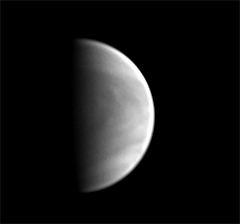NGC 891 - more data
3300 frames of 1 second each for L (no filters)
combined with 100 R G and B frames (100 for each) of 4 seconds each (astronomik filters)
full version
40 cm Dobson made by Rik ter Horst
Point Grey Blackfly (IMX249 Mono)
3300 frames of 1 second each for L (no filters)
combined with 100 R G and B frames (100 for each) of 4 seconds each (astronomik filters)
full version
M57 with the ASI174MM camera.
LRGB, 4 second exposures.
Hurray for good seeing!
There should be some more data sets here that were pretty good, but this RGB set was definitely one of the best of the evening. Transparancy was rather poor with high altitude clouds.
R-RGB of Saturn under good conditions, at least considering the low altitude (<25 degrees).
Jupiter under pretty good seeing conditions with the 16" Dob.
Stacked with AutoStakkert!2, and derotated several stacks in Winjupos. Post-processing in Photoshop.
Edit: new image a couple hours later when the seeing went down a little bit:

I also made two animations in infrared light showing the GRS (during rather poor seeing)

And oval BA:

There are still some images left to process, and I might just be able to make a VERY long animation of about 5 hours of data. Although I'm afraid this will take some time since the recordings show Jupiter at different scales and orientations...
The core of M42 including several proto-planetary discs. See the smaller images for close-ups. Look at the bright star at the bottom right in the center, surrounding it are several externally illuminated photo-evaporating protoplanetary discs. Luckily there is a shorter word for that: proplyds. The other enlargment shows another proplyd.
This was imaged with the the 10" Meade Starfinder and ASI120MM cmos camera, using just 1 second exposure times. The image is an RGB recording, I used astronomik RGB filters.
I was just playing around with different processing methods, always fun to try out new processing approaches. In total I spent about 4-5 hours processing this image, but that doesn't mean you can actually tell that ;).
Attached is Jupiter on November 19, at 00:01 RGB (I derotated two stacks in WinJupos and combined them). Interesting to see the small cyclonic dark spot division next to oval BA).
Imaged with the 10" Meade Starfinder and ASI120MM cmos camera (I will add this camera to the equipment list soon)
I also made an animation showing Jupiter in blue light:

And finally a remake of the image I made in Oct 2013.

Copernicus in RGB during pretty good seeing.
Imaged together with Rik ter Horst and his 16" Dobson telescope.
Here is a comparison image of Venus on March 22 and 23.
In both cases I used UV as luminance (and UV = W47+BG39)
Then the RGB was mapped like this:
march 22: R-(g)-UV
march 23: IR-(g)-UV
where (g) is a synthethic green channel (just the average of the other two). On March 22 I didn't capture IR, so I just R for red ;) The IR and R recordings were very much comparable, as I didn't process them hard at all (so all the color information basically comes from the UV channel).
Here is a small animation in UV light (with a W47 filter) showing clouds moving rapidly on Venus. The animation spans only 35 minutes.

The still image shows Venus in UV-RGB.